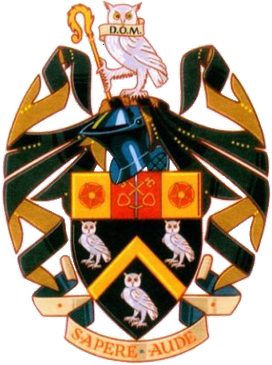
The Manchester Grammar School (MGS) in Manchester, England, is the largest private day school for boys in the United Kingdom. Founded in 1515 as a free grammar school next to Manchester Parish Church, it moved in 1931 to its present site at Rusholme. In accordance with its founder's wishes, MGS remains a predominantly academic school and belongs to the Headmasters' and Headmistresses' Conference.

Sir John Deane's Sixth Form College is a sixth form college in Northwich, Cheshire, UK. It was formerly Sir John Deane's Grammar School, which was founded in 1557.
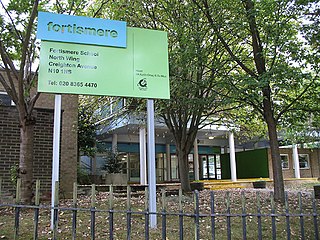
Fortismere School is an 11–18 mixed, foundation secondary school and sixth form in Muswell Hill, Greater London, England.

Mayfield School is a mixed all-through school for pupils ages 4 to 16 located in North End, Portsmouth.
Priestley Sixth Form and Community College is a sixth form college in Warrington, Cheshire, England. It also offers adult courses and professional training on another site, and is an associate college of the University of Salford. The college offers a range of courses, including AS/A2 Levels, BTECs, Advanced Diplomas, functional skills, and pre-university foundation courses.
Lincolnshire is one of the few counties within the UK that still uses the eleven-plus to decide who may attend grammar school, in common with Buckinghamshire and Kent.
The County High School, Leftwich, is a coeducational secondary school with academy status, for students between 11 and 16 years of age, in Leftwich, Cheshire, England.
Frodsham School was a designated specialist science and technology college in the town of Frodsham, Cheshire, England. The school closed in the summer of 2009 due to declining enrollment because of lower birth rates in recent years; most of the school's intake came from the nearby Runcorn area, and there is another local high school, Helsby High School.

The King's School is an 11–18 boys grammar school with academy status, in the market town of Grantham, Lincolnshire, England. The school's history can be traced to 1329, and was re-endowed by Richard Foxe in 1528. Located on Brook Street, the school's site has expanded over the course of its history, with some school buildings dating back to 1497.

The Whitby High School is a co-educational secondary foundation school, situated in Whitby, a suburb of Ellesmere Port, Cheshire, England.
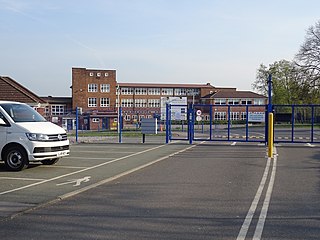
Tarporley High School and Sixth Form College is a coeducational secondary school and sixth form with academy status, located in the village of Tarporley, Cheshire, England.
The Harvey Grammar School is located in Folkestone, Kent, England. It is a grammar school with academy status founded by the family of William Harvey in 1674.

Fairfield High School was a co-educational secondary school in Widnes, Cheshire.
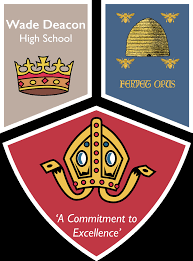
Wade Deacon High School is a coeducational secondary school with academy status in Widnes, Cheshire, England.
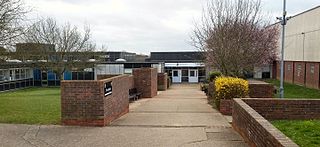
Fearnhill School is a mixed secondary school and sixth form located in Letchworth, Hertfordshire, England.
Walton Academy, formerly Walton Girls' High School is a co-ed secondary school, in Grantham, Lincolnshire, England. It is situated in the south-west of the town near the A607 junction with the A1. The school accepts approximately 135 girls a year. In September 2019, the school saw its first boys enter in year 7, previously boys were only in the sixth form.
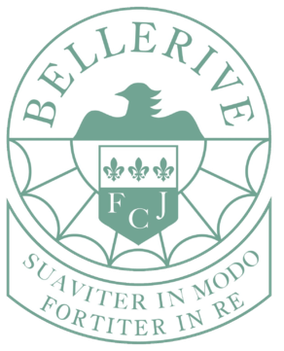
Bellerive FCJ Catholic College is an all-girls secondary school and a coeducational sixth form located on Windermere Terrace in Liverpool. It is a Roman Catholic school, and has academy status.
The Ravensbourne School is a secondary academy school in the London Borough of Bromley. It stands on a 22-acre (8.9 ha) site in Hayes Lane, to the south of Bromley, and in the parish of Bromley St Mark. It is named after the River Ravensbourne, which runs nearby.

Neale-Wade Academy is a secondary school and sixth form with academy status in the market town of March, Cambridgeshire, England. As with many state schools, the current school was the product of a merger of a grammar school and a comprehensive school. The merged school has since grown to become, Fenland's largest secondary school. It was designated Mathematics & Computing specialist status in 2005, and gained academy status in 2013.

Stockport School is a mixed 11–16 secondary school in Stockport, Greater Manchester, England.














